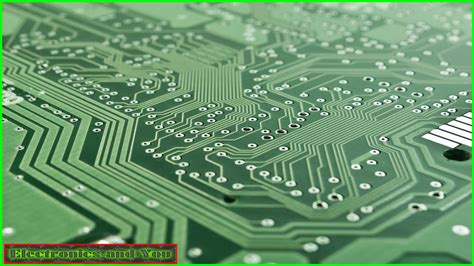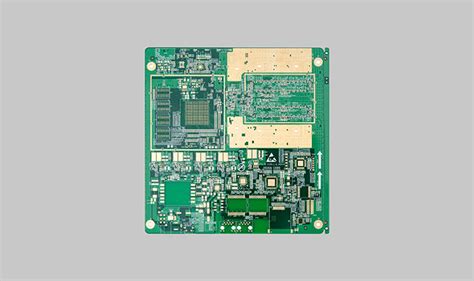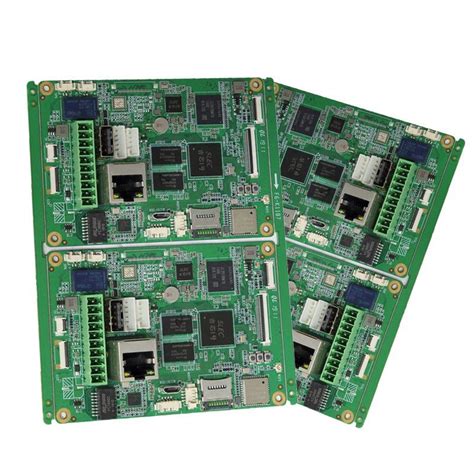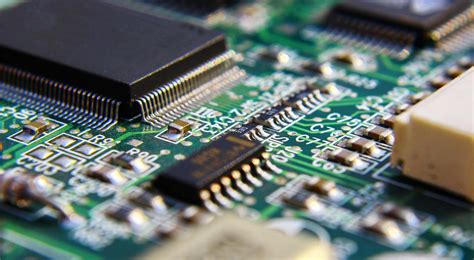Revolutionizing Circuits: The Future of PCB Technology
Key Takeaways
The world of PCB manufacturing is experiencing significant transformations, as new technologies and materials reshape how circuits are designed and produced. As you explore the realm of pcb manufacturing companies, you’ll discover that the focus is shifting toward more efficient processes and innovative solutions that can significantly reduce your pcb manufacturing cost. The incorporation of advanced materials not only enhances performance but also contributes to the sustainability aspect of electronic production. Moreover, with the rise of multilayer PCBs, you can expect increased functionality in tighter space constraints, making them ideal for modern electronic applications. These developments indicate a robust future for the pcb manufacturing business, where adaptability and creativity are crucial in meeting the ever-growing demand for higher efficiency and reliability in electronic circuits. As these trends continue to unfold, understanding these key takeaways will empower you to make informed decisions in your projects and investments within the industry.
Introduction to PCB Technology: A New Era for Circuits
As you step into the world of printed circuit boards, or PCBs, it’s essential to acknowledge the pivotal role they play in modern electronic devices. PCBs serve as the backbone for circuits, providing both physical support and electrical connections for components. With the rapid evolution of PCB technology, you are witnessing a significant shift in how circuits are designed and produced. This transformation is primarily driven by advancements in PCB manufacturing, which have enabled pcb manufacturing companies to explore innovative materials and techniques, ultimately lowering the pcb manufacturing cost while improving performance.
In this new era, your understanding of pcb manufacturing business practices can greatly influence your approach to circuit design. As manufacturers can now create multilayer configurations and integrate flexible designs, you can expect greater functionality packed within smaller form factors. This improvement ensures that electronic devices become more compact and efficient without compromising on reliability or performance. Furthermore, sustainable practices in pcb manufacturing are becoming increasingly vital as industries recognize the need for environmentally friendly solutions. By staying informed about these developments, you position yourself at the forefront of a technological revolution that promises to reshape not only how circuits are constructed but also their overall impact on our daily lives.
Key Advancements in PCB Materials and Their Impact
The landscape of PCB manufacturing is witnessing revolutionary advancements driven by innovative materials that significantly influence circuit performance and durability. Recent developments in materials science have unlocked new possibilities for PCB manufacturing companies to push the boundaries of circuit design. For instance, the introduction of high-frequency substrates enables better signal integrity, which is essential for applications that demand rapid data transfer. Moreover, advancements in thermally conductive materials help to dissipate heat more efficiently, enhancing the reliability of electronic devices.
These innovations not only improve performance but also optimize the pcb manufacturing cost by allowing for thinner designs that require fewer materials while retaining strength and robustness. Transitioning to eco-friendly materials is another crucial trend in the pcb manufacturing business, appealing to environmentally conscious companies and consumers alike. As you consider your next project, emphasizing these cutting-edge materials can significantly elevate your circuits’ capabilities while aligning with modern sustainability standards. This evolution in material choice will undoubtedly redefine how you approach circuit design, promising enhanced efficiency and performance for electronic applications. For more insights on innovative PCB solutions, you can explore Andwin PCB.
Innovative Techniques Transforming Circuit Design
In the rapidly evolving field of electronics, innovative techniques are revolutionizing circuit design and enhancing the capabilities of PCB manufacturing. As you explore these advancements, you’ll notice a significant trend towards incorporating cutting-edge technologies that not only streamline the production process but also improve the performance of electronic devices. For instance, the integration of automated design tools allows engineers to create more complex layouts with greater precision, ultimately reducing the PCB manufacturing cost and speeding up time to market.
Moreover, 3D printing is making waves in the industry by enabling rapid prototyping and allowing for more intricate geometries that traditional methods couldn’t achieve. This technique has opened doors for small businesses to compete with larger PCB manufacturing companies, as it lowers initial investment requirements and promotes a more agile response to market demands.
Another notable technique is the use of high-frequency materials that can boost signal integrity, crucial in today’s high-speed electronics. By choosing the right materials in your PCB manufacturing business, you can significantly enhance performance while keeping production efficient and cost-effective.
To give you a better understanding of how these techniques influence circuit design, here’s a comparison table highlighting key innovations:
| Technique | Impact on Design | Benefits |
|---|---|---|
| Automated Design Tools | Increases precision and reduces design time | Lower costs, faster production |
| 3D Printing | Enables complex layouts and rapid prototyping | Flexibility, reduced lead times |
| High-Frequency Materials | Enhances signal integrity | Improved performance in electronics |
By embracing these innovative techniques, you position your designs for success while navigating the competitive landscape of PCB manufacturing effectively. The synergy between advanced methodologies and material choices is sure to define future trends in circuit design as technology continues to advance.
Enhancing Performance: The Role of Multilayer PCBs
In the realm of pcb manufacturing, multilayer PCBs are increasingly recognized for their ability to dramatically enhance performance in electronic circuit designs. By stacking multiple layers of circuitry, these PCBs allow for greater complexity and functionality within a compact footprint, which is crucial in today’s miniaturized electronics. You will find that multilayer configurations not only optimize space but also improve signal integrity and reduce electromagnetic interference, making them a preferred choice among many pcb manufacturing companies.
The pcb manufacturing cost associated with multilayer designs may be higher compared to simpler single-layer boards; however, the benefits often outweigh the initial investment. This is especially true for applications that require high-speed signal processing or operate in challenging environmental conditions. As you delve deeper into these advanced technologies, consider this important tip for your pcb manufacturing business: investing in quality materials and sophisticated design techniques can lead to significant long-term savings by reducing issues related to performance and durability.
Moreover, multilayer PCBs facilitate not only tighter routing but also allow for embedded components, which can further enhance functionality and reduce assembly time. As you explore options within your circuit designs, keep in mind that the choice of materials is pivotal. Selecting the right substrate can greatly impact both the thermal management and mechanical reliability of your multilayer PCBs.
“Investing in multilayer circuits today is an investment in tomorrow’s technology.”
In conclusion, embracing the potential of multilayer PCBs is vital as you strive for innovation and improved performance in your electronic circuits.
Eco-Friendly Solutions in PCB Manufacturing
In the rapidly evolving world of electronics, pcb manufacturing is increasingly adopting eco-friendly solutions to meet both consumer demand and regulatory requirements. As awareness about environmental impact grows, pcb manufacturing companies are exploring sustainable materials and processes that minimize waste and reduce harmful emissions. One significant advancement is the use of biodegradable substrates, which not only ensure that electronic devices are more eco-conscious but also maintain performance standards comparable to traditional materials. Additionally, innovations such as water-based etching techniques replace harmful solvents, contributing to a safer work environment while decreasing the overall pcb manufacturing cost. Tools that promote energy efficiency during the production phase not only lower operational expenses but also appeal to environmentally conscious consumers. Furthermore, as the market shifts towards a more sustainable future, companies engaged in the pcb manufacturing business are likely to gain a competitive edge by demonstrating their commitment to sustainability. By implementing these eco-friendly practices, you can contribute to a more responsible electronics industry while enhancing your product’s market appeal.
The Future of Flexible and Rigid-Flex PCBs
As you delve into the future of Flexible and Rigid-Flex PCBs, you’ll discover a landscape rich with innovation and potential. These advanced circuit board technologies allow for greater versatility in electronic design, accommodating the ever-evolving needs of various applications. Flexible PCBs can easily bend and conform to compact spaces, making them ideal for wearable devices and intricate designs where traditional rigid boards may falter. On the other hand, Rigid-Flex PCBs combine the robustness of rigid boards with the flexibility of flexible substrates, enabling manufacturers to create compact yet durable solutions that maintain high performance.
In this evolving sector, PCB manufacturing companies are focused on refining their processes to strike a balance between cost efficiency and performance. As demand increases for miniaturized electronics, understanding PCB manufacturing costs has become critical. Companies are continually seeking ways to innovate without inflating production expenses while ensuring that quality is maintained. The rise of eco-friendly materials is also reshaping the landscape, leading to a shift toward more sustainable practices in your PCB manufacturing business.
By embracing these advancements, you position yourself at the forefront of technological evolution in circuit design. As you consider future projects or products, keep in mind that utilizing advanced techniques in flexible and rigid-flex PCBs may be integral not just to enhancing functionality but also optimizing overall efficiency within your designs.
Challenges and Solutions in Modern PCB Production
The landscape of PCB manufacturing is continuously evolving, presenting both challenges and opportunities for PCB manufacturing companies. As technology advances, the demand for more complex and compact designs increases, pushing manufacturers to optimize their processes. One significant challenge is the balancing act of managing PCB manufacturing costs while ensuring high-quality standards. You may find that achieving cost-efficiency often requires innovative solutions, such as adopting advanced materials that enhance performance without inflating expenses.
Another challenge lies in meeting the ever-shifting demands of industries ranging from consumer electronics to aerospace. These sectors require increasingly intricate designs that can easily be adapted for various applications. To navigate this complexity, PCB manufacturing businesses are turning to advanced techniques like automation and digitalization, streamlining workflows while minimizing errors and delays.
Moreover, environmental concerns are at the forefront of modern production challenges. Consumers and regulators alike are calling for greener practices within PCB manufacturing processes. As a response, companies are prioritizing eco-friendly materials and sustainable practices not only to comply with regulations but also to attract a wider customer base that values sustainability.
Addressing these challenges requires a multifaceted approach that leverages innovation across all levels of production. By focusing on the integration of new technologies and sustainable practices, you can ensure that your efforts in PCB manufacturing yield products that meet modern demands while remaining cost-effective and environmentally conscious.
Conclusion: Shaping the Future of Electronic Circuits
As you delve into the future of PCB technology, it’s clear that the landscape is evolving rapidly, bringing forth transformative changes in how circuits are designed and manufactured. The pcb manufacturing process is becoming increasingly sophisticated, with advancements that allow for greater precision and efficiency. This evolution not only impacts pcb manufacturing companies but also affects your choices as a consumer and innovator in the field. With the rising demand for high-performance electronics, understanding the intricacies of pcb manufacturing cost becomes crucial to staying competitive. You should also consider how new materials and techniques are substantially influencing the pcb manufacturing business, allowing companies to offer more reliable and eco-friendly products that meet stringent industry standards. As you navigate this dynamic environment, embracing these technological advancements will be essential for shaping your future projects in electronic circuit design, ensuring you remain at the forefront of innovation while maximizing performance and sustainability.
Conclusion: Shaping the Future of Electronic Circuits
As you delve into the evolving landscape of PCB technology, it becomes clear that pcb manufacturing is at the forefront of this transformation. The shift towards more sophisticated pcb manufacturing companies signifies a move towards enhanced quality and performance in electronic circuits. These innovations enable you to explore new frontiers in circuit design, ensuring that your projects can leverage the benefits of advanced materials and methods. However, it is crucial to consider the pcb manufacturing cost associated with these advancements, as balancing quality with economic feasibility remains a key challenge within the pcb manufacturing business. By staying informed about these trends and being adaptable to changes, you can position yourself for success in an industry that continually seeks to push the boundaries of what is possible. Understanding these dynamics will not only enhance your strategies but also allow you to contribute effectively to the future developments in electronic circuits, shaping them for generations to come.
FAQs
What are the key factors influencing pcb manufacturing costs?
The key factors include material selection, complexity of the design, thickness of the layers, and the technology used for production. Each aspect can significantly affect the overall pcb manufacturing cost.
How can I choose the right pcb manufacturing companies?
When selecting a manufacturer, consider their experience, certifications, technological capabilities, and customer reviews. It’s beneficial to ask for samples and quotes from multiple pcb manufacturing companies to assess quality and pricing.
What is involved in starting a pcb manufacturing business?
Starting a pcb manufacturing business involves understanding market demands, investing in the right technology and machinery, sourcing quality materials, and navigating regulatory standards. A solid business plan will help outline these essential steps.
How does technology impact modern pcb manufacturing?
Advancements in technology lead to improvements in efficiency, precision, and scalability in pcb manufacturing. Innovations such as automation and enhanced software tools are introducing faster production times while reducing human error.
For further insights into your needs related to pcb manufacturing, please click here: Andwin PCB Manufacturing.







